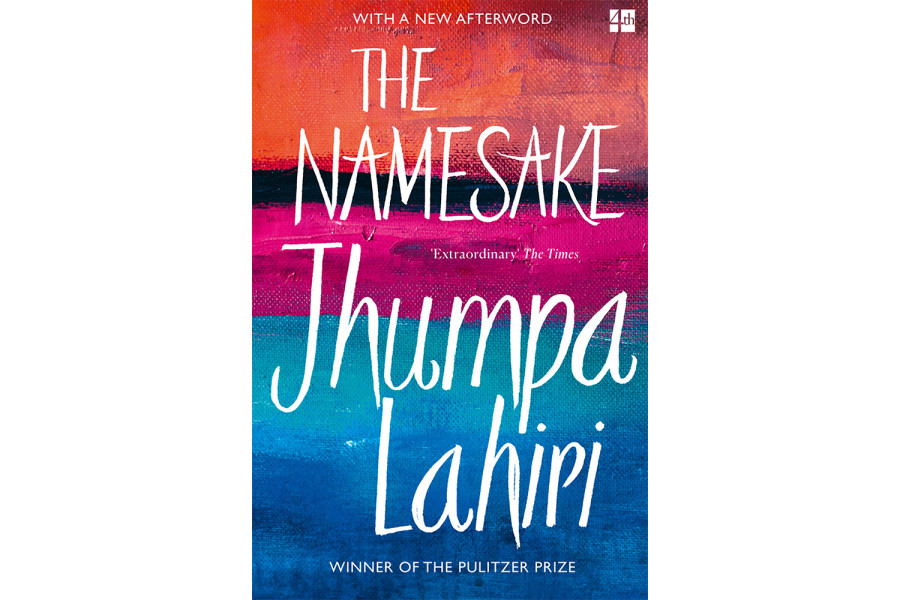Culture & Lifestyle
Family, identity and loss
‘The Namesake’ by Jhumpa Lahiri explores the intersection of Indian and American cultures.
Sugam Gautam
I had read all of Jhumpa Lahiri's works before starting her debut novel, ‘The Namesake’. As always, I’m impressed by her magical craft and ability to make trivial things appear elevated. Lahiri never plots ambitious narratives; instead, she effortlessly moves the narrative forward by capturing the essence of everyday life. ‘The Namesake’ follows this same approach.
During a train journey to his grandparents' house, Ashoke Ganguli meets a man who encourages him to explore the world beyond his homeland. Before this, Ashoke had never considered going to other countries, spending the majority of his years in a foreign land where, in the initial days, he would have to struggle for his identity. Unfortunately, that night, the train derails, resulting in the death of hundreds, including the man Ashoke met earlier.
Although Ashoke is fortunate enough to survive the disaster, the years that follow are no less perilous as he stays bedridden, unable to walk or travel. Strangely, a book written by his favourite author, Nikolai Gogol, also survives the chaos.
After recovery, Ashoke marries and, following the man's advice, moves to the US to escape the memories of the train accident. However, the images of that night continue to haunt him. When Ashoke and Ashima become parents, they eagerly await a letter from Ashima’s grandmother containing the newborn's name. Unfortunately, the letter never arrives at their US apartment. So they name the child temporarily after Ashoke’s favourite author, Nikolai Gogol. They assume the grandmother’s letter will reach them eventually, and they will change the baby’s name accordingly. The temporary name, only used by family members, becomes the official name of the boy as they fail to find the letter. The grandmother, not in good health, eventually dies, disrupting the pattern of her keeping the names of the grandchildren.
The novel highlights the cultural contrasts between India and the US, through characters like Ashoke, Ashima and Gogol. Gogol’s younger sister, Sonia, isn't present much, with the author choosing to steer the narrative through Gogol’s experiences instead.
Gogol feels uneasy about his name, finding his classmates in the US to have more popular and stylish names. During occasional visits to India for Durga Puja, he struggles to connect with the places and relatives, feeling like one of those Americans bewildered by numerous formalities.
In the US, his home is often filled with his parents’ Bengali friends during special occasions. This is as close as he gets to India, experiencing it through his father's anticipation for parties and his mother's extended efforts in the kitchen. During gatherings, children like him are bored, watching TV, while the adults engage in conversations, making Gogol feel more connected to his Indian roots.
Ashoke, a professor at an American university, realises that his son hasn't fully embraced Indian culture. Despite this, Ashoke and Ashima never express dissatisfaction with Gogol’s choices. As Gogol matures, he even changes his name to Nikhil, yet he remains Gogol to his parents and their friends.
He dates an American girl, and though his parents don’t overtly disapprove, he senses their reluctance for him to marry her.
Ashima is a quiet woman who hates having her family members away from the house for long. But she has to deal with this as Ashoke is gone on a lengthy educational trip, Gogol is with his girlfriend’s family on vacation and Sonia is in a different city for studies. And then, suddenly, one day, she is informed about the untimely demise of her husband.
Gogol undergoes a transformation after his father’s death, gaining a deeper appreciation for his father’s quiet love. Some years later, he marries a Bengali girl who has been living in the US. Though the relationship seems promising, the girl cheats him, and they break up. By the time he turns 32, he has seen it all: his parents’ struggle in the US, the stark distinction between the cultures, the love of his parents, and the most heartbreaking—the death of his father.
The novel evokes a sense of transformation one goes through in life, showing why a person can’t forget their roots. Ashima sells the US house and plans on dividing her time between India and her children’s apartment. Though the love shared between Ashima and Ashoke is not expressive, readers can feel that they care for each other deeply. The novel is well-paced and immersive.
Lahiri stands at the intersection of two cultures, offering a compassionate gaze at the subtle nuances. The characters she crafts linger in your memory. Lahiri's writing is a testament to her meticulous work. The fine details she sketches will keep you engrossed, making it hard to put the book down. Through her masterful storytelling and well-developed characters, Lahiri has undoubtedly gifted a literary masterpiece that will be treasured for generations.
The Namesake
Author: Jhumpa Lahiri
Year: 2003
Publisher: Houghton Mifflin




 17.8°C Kathmandu
17.8°C Kathmandu















